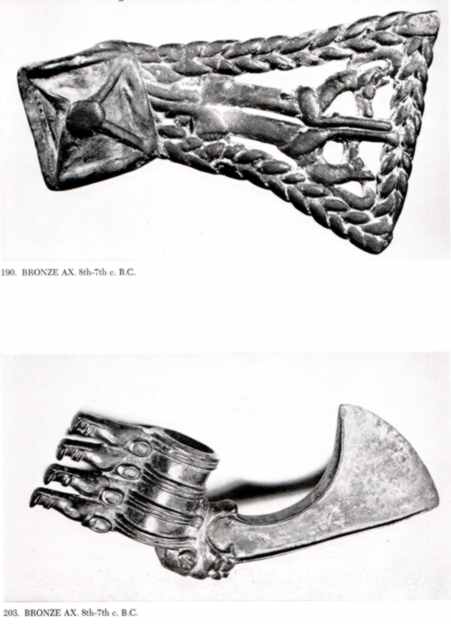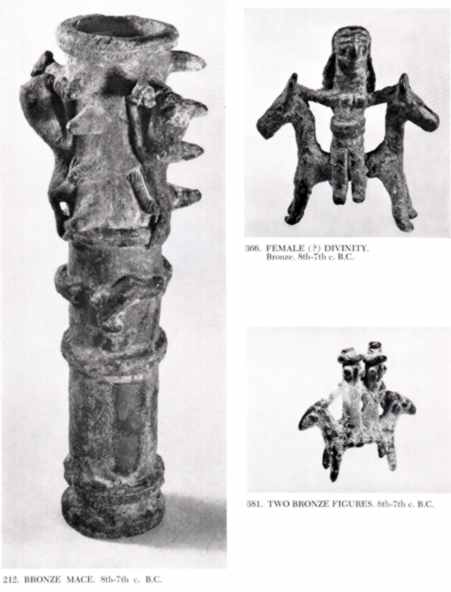|
|||
 |
135- Bronze Ax with Socket; The decorative motifs on the blade are
engraved and in relief. An inscription of five and three lines
respectively, on both sides of the ax, gives the name of
Nabuchodonosor I, King of Babylon. On the back of the socket are
four spikes, one of which is broken Luristan-Iran 12th C. BC 136- Bronze Ax with socket; The blade resembles that of a halberd. Cuneiform inscription in six lines gives the name of Addapaksu, the "sukkal" of Susa Luristan-Iran 18th C. BC  190- Bronze Ax; Blade decorated with the openwork design of two facing, rearing animals with ina braided frame. Luristan-Iran 8th-7th C. BC 203- Bronze Ax; The blade issues from a lion's head Back of socket decorated with four boars' heads. Luristan-Iran 8th-7th C. BC 381- Two Bronze Figures; Clasping each other, are seated sideways on the joined forequarters of two horses Luristan-Iran, 8th-7th C. BC  366- Female (?) Divinity, Bronze; Seated sideways on the jioned forequarters of two horses and holding their heads with her hands. Luristan-ran 8th-7th C. BC 212- Bronze Mace; Decorated with three lions devouring a wild mountain goat. Around the socket are the three recumbent wild mountain goats of smaller size. Luristan-Iran- 8th-7th C. BC 184- Bronze Halberd-Ax, The back of the socket is decorated with lions in relief and witha star. Luristan- Iran, 8th-7th C. BC 
|
 |
|
|
Imperial Majesty's Message (Parsi) |
|||
|
7,000 years of Art and Culture has its own menu at the right hand side to each page, to visit our other pages please use bottom menu |